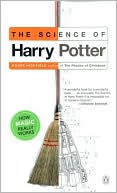Category Books
- Fiction Books & Literature
- Graphic Novels
- Horror
- Mystery & Crime
- Poetry
- Romance Books
- Science Fiction & Fantasy
- Thrillers
- Westerns
- Ages 0-2
- Ages 3-5
- Ages 6-8
- Ages 9-12
- Teens
- Children's Books
- African Americans
- Antiques & Collectibles
- Art, Architecture & Photography
- Bibles & Bible Studies
- Biography
- Business Books
- Christianity
- Computer Books & Technology Books
- Cookbooks, Food & Wine
- Crafts & Hobbies Books
- Education & Teaching
- Engineering
- Entertainment
- Foreign Languages
- Game Books
- Gay & Lesbian
- Health Books, Diet & Fitness Books
- History
- Home & Garden
- Humor Books
- Judaism & Judaica
- Law
- Medical Books
- New Age & Spirituality
- Nonfiction
- Parenting & Family
- Pets
- Philosophy
- Political Books & Current Events Books
- Psychology & Psychotherapy
- Reference
- Religion Books
- Science & Nature
- Self Improvement
- Sex & Relationships
- Social Sciences
- Sports & Adventure
- Study Guides & Test Prep
- Travel
- True Crime
- Weddings
- Women's Studies
The Science of Harry Potter: How Magic Really Works » (Reprint)

Authors: Roger Highfield
ISBN-13: 9780142003558, ISBN-10: 0142003557
Format: Paperback
Publisher: Penguin Group (USA) Incorporated
Date Published: May 2003
Edition: Reprint
Author Biography: Roger Highfield
Roger Highfield is science editor of The Daily Telegraph, author of The Physics of Christmas, and coauthor of the acclaimed books The Arrow of Time and The Private Lives of Albert Einstein.
Book Synopsis
Can Fluffy the three-headed dog be explained by advances in molecular biology? Could the discovery of cosmic "gravity-shielding effects" unlock the secret to the Nimbus 2000 broomstick's ability to fly? Is the griffin really none other than the dinosaur Protoceratops? Roger Highfield, author of the critically acclaimed The Physics of Christmas, explores the fascinating links between magic and science to reveal that much of what strikes us as supremely strange in the Potter books can actually be explained by the conjurings of the scientific mind. This is the perfect guide for parents who want to teach their children science through their favorite adventures as well as for the millions of adult fans of the series intrigued by its marvels and mysteries.
Publishers Weekly
British science writer Highfield (The Private Lives of Albert Einstein) takes on J.K. Rowling's Harry Potter series "to show how many elements of her books can be found in and explained by modern science." The result is an intelligent though odd attempt to straddle the imaginative worlds of science and fiction. Using Harry's magical world to "help illuminate rather than undermine science," Highfield splits the book in two: the first half a "secret scientific study" of everything that goes on at Potter's Hogwarts school, the second half an endeavor to show the origins of the "magical thinking" found in the books, whether expressed in "myth, legend, witchcraft or monsters." This division is an obvious attempt to duplicate the method and the popularity of his Physics of Christmas. Here, however, as intriguing as the concept is, the author isn't quite able to engage or entertain as he explores the ways in which Harry's beloved game of Quidditch resembles the 16th-century Mesoamerican game Nahualtlachti or how, by using Aztec psychotropic mushrooms, Mexican peyote cactus and other types of mind-altering fungi, even Muggles can experience their own magic. While interesting, the book reads more like an obsessive Ph.D. dissertation that fails to satisfy either of its target audiences: the children who read the books or the parents who buy them and often read them themselves. (Oct.) Forecast: Sellers should note: this is not a simple effort to introduce basic science concepts to young Potter fans. Copyright 2002 Cahners Business Information.
Table of Contents
| Introduction: The Science of Magic | xv | |
| Part I | ||
| 1. | Broomsticks, Time Travel and Splincbing | 3 |
| 2. | How to Play Quidditch Without Leaving the Ground | 24 |
| 3. | The Sorting hat, Invisibility Cloak and Other Spellbinding Apparel | 39 |
| 4. | The Mathematics of Evil | 51 |
| 5. | Owls, Snails and Skrewts | 66 |
| 6. | Magizoology | 85 |
| 7. | Bertie Bott's Every Flavor Beans | 112 |
| Part II | ||
| Foreword | 125 | |
| 8. | Stars, Mystic Chickens and Superstitious Pigeons | 127 |
| 9. | The Greatest Wizard | 146 |
| 10. | There Be Dragons. Really | 173 |
| 11. | The Potions Master | 194 |
| 12. | The Origins of Witchcraft | 216 |
| 13. | The Philosopher's Stone | 242 |
| 14. | Belief, Superstition and Magic | 262 |
| 15. | The Magic of Science | 279 |
| References | 289 | |
| Glossary of Muggle Science, Potter Magic, Oddments and Tweaks | 297 | |
| Index | 315 |
Subjects
 Witchcraft and Magic
Witchcraft and Magic  Magic Studies
Magic StudiesNew Age & Spirituality
 Witchcraft and Magic
Witchcraft and Magic  Magic, Practical
Magic, PracticalScience & Nature
 All Science & Nature
All Science & Nature  Science - General & Miscellaneous
Science - General & MiscellaneousNonfiction
 Science & Nature
Science & Nature  All Science & Nature
All Science & Nature
